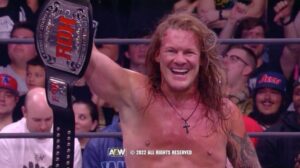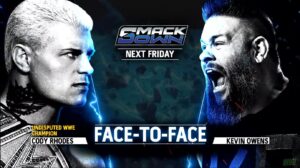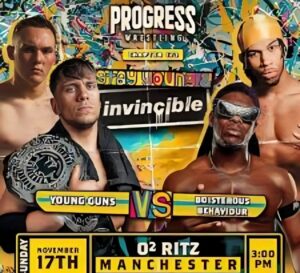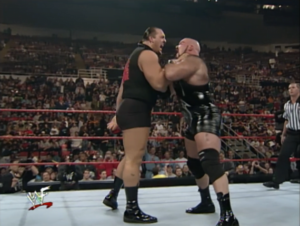For years, DeWayne Bruce was responsible for helping launch some of the biggest stars in pro wrestling. As the lead trainer of the WCW, he coached such names as Bill Goldberg, Paul Wight, and Molly Holly. Later, he would see such young stars as Shane Helms, Elix Skipper, and The Natural Thrillers come under his tutelage.
In speaking recently with Last Word on Pro Wrestling, the man known affectionately as ‘Sarge’ discussed his career, his time at The Power Plant, and what he thinks his legacy in wrestling will be.
Bruce was certainly WCW through and through, even from the beginning. He was trained by them, became one of their reliable in-ring workers, and stayed with the promotion all the way into its final years. He recalled his initial training with the company.
“I started out with Jody Hamilton,” Bruce commented. “Ole (Anderson)was the one who sent me down there. So, I had some awesome people backing me right from the beginning.”
Bruce got his indoctrination to the professional wrestling business right away.
“I told Jody, ‘Sir, I just want to see the training’. At the time, he was doing something with the Atlanta Journal-Constitution and even had his mask on. So, I went back, and sat back and watched. At the time, I was in really great shape. But I sat there, and saw the Hindu squats and all the conditioning.”
“I told him, ‘Sir… I need about three weeks.’ He goes, ‘Why don’t you go ahead and get started now, kid?'”
At the time, he was working a full-time job, but never took his eyes off the prize.
“I was working a construction job then, hanging sheet rock. Believe it or not? I was doing squats in the morning and squats on my lunch break. I was doing squats every chance I got. Then I went back (to wrestling school), and I blew the doors off. And that’s how it all got started.”
Beginnings
He began his in-ring career with WCW in the late ’80s, gaining his first bit of notoriety as Sgt. Buddy Lee Parker.
He would team with Lt. James Earl Wright to form a pair of police lookalikes, ‘The State Patrol’. The pair were a middle-ish, heel tag team. They would often beat preliminary wrestlers, but lose to the bigger stars.
The State Patrol would eventually capture tag team gold in Puerto Rico’s World Wrestling Council, but never won any championships in WCW.
“My Mom was a police officer,” Bruce told us about the gimmick. ” So, she had access to the equipment. We went out and bought everything that looked real. I can’t tell you how many times we were stopped in the airport. You never check your ‘wrestler bag’, because if you lose it? You can’t work.”
“I got stopped many a time at the airport,” he laughed. “And then one time, we got stopped at a roadblock in Florida. They made us empty out all of our stuff. Then, when they got us back to the police station? They asked us for some autographs and let us go.”
Solo Run
Bruce would later be re-packaged as a solo performer. Over the course of the next few years, he would portray a military style character. He also appeared as Braun the Leprechaun as part of Kevin Sullivan’s Dungeon of Doom stable.
“I had earned the respect of all the top guys,” Bruce said. “So, I didn’t get any flak or anything (as a single performer). In fact, I could work with guys and lean things a different direction. And nobody ever fought back with me on it. I was easy to work with.”
Unfortunately, singles success would also elude him. At that point, he was already putting his skills and wrestling acumen to work in a different way.
Bruce’s greatest achievements would come later, at the WCW Power Plant, where he molded several, significant careers.
Originally founded by ‘The Assassin’ Jody Hamilton in 1989, the Power Plant would officially become WCW’s talent factory two years later. Originally fueled by such luminaries as Hamilton and Ole Anderson, Bruce would eventually take over as its lead trainer.
“People think I was appointed to that spot; that wasn’t the case,” Bruce said. “I earned that spot. I had to take the ball and run with it. Nothing was just handed to me there.”
During his time there, he would work with names like Diamond Dallas Page, The Giant (Paul Wight), and Bill Goldberg. He also helped produce a crop of young stars like Shane Helms, Elix Skipper, and Molly Holly.
“Some people say the Power Plant wasn’t successful. I’ve heard a lot of people say that. But if you look at who graduated, there’s like 80 people who went on to have good careers. So I think we did a pretty good job.”
“I also trained football players,” Bruce continued. “Kevin Greene, Steve McMichael, Bill Kazmeier… Then, you look at the athletes (from other sports) like Kevin Nash, DDP, and The Giant. We took a lot of people from other sports and turned them in to wrestlers. A bunch of them. So, I don’t know how people can say that we weren’t successful, to tell you the truth.”
Dewayne Bruce Demanded Commitment
One thing was true about DeWayne Bruce when you came to his camp. If you weren’t serious and in shape, you were in for a long ride with the Sarge.
“I used to tell (trainees) exactly what we were going to do on the phone,” Bruce remembers. “So you know, I figured if they came in out of shape? That was their fault. Because I done told them what we were going to do. If they decided not to prepare for it, then shame on them.”
“A lot of times, the ones who survived were the ones who made it to the second day. I’d have military people, football people, people who had been training their whole life, who said they would never go through another day at the Power Plant.”
“So I was proud of that. But did I put people through hell? Yeah… I guess so.”
“But it just proves that you got to love it. And you’ve got to dedicate your life to it. So that’s exactly why I did what I did.”
By far, his greatest protege had to be Goldberg.
The rookie superstar flew on a rocket ship of success upon entering WCW and was a critical part of the Monday Night Wars. Bruce recalled the first time he saw the former football player, and said he knew he had someone special.
“Bill came to a tryout, but it was naturally closed doors, of course” Sarge recalled. “He went through the whole tryout. He did the squats and the cardio with no problem. I had so many dark matches with him, where we were selling to a monitor and Eric Bischoff, you know?”
“I had the thing where I called it in the ring… on the fly. There was no talking about it, like they do these days. And I called different things for Bill. One time, I called a spot (where Goldberg went down). And then, he did a back handspring and speared me out of that.”
“I had him doing a lot of stuff that he would have never done, ever.”
He said he was proud to see what his star pupil would go on to accomplish.
“When Bill would come out in all that pyro? That was the most awesome entrance I had ever seen.”
Thoughts On Today’s Style
As a stickler for the traditional ways of pro wrestling, Bruce admits that he’s disappointed with today’s style.
“We used to tell a story in the ring,” he stated. “And, I don’t know if we could ever go back to that day, but there’s got to be a place in the middle. Because I think fans are really starving for that.”
“They’ve already seen what today’s part is like. And they remember what the old part’s like. So, I think if you could find something in between? I think you would have something there.”
Even though he will never go down as the most famous name in the wrestling, DeWayne Bruce certainly left his mark. Behind the scenes and out of the spotlight, he now works for home builders, D.R. Horton, and still stays involved in the business from time to time.
Over the course of his career, Bruce set in to motion several careers that would change the history of the business forever. In retrospect, Sarge says he hopes his legacy is that he gave back to the industry he loved.
“I was always proud of my career,” Bruce said. “I’ m proud of what I’ve done, and proud of the people I was able to help.”
“All I can say to the fans is thank you. It’s an honor and a pleasure to know that people remember you. I’m proud of the fans, and I thank them so much. Because we would be nothing without them. They’re such a big part of our lives… from the top guy to the last guy. It was all about the fans.”
More from LWOS Pro Wrestling
Stay tuned to the Last Word on Pro Wrestling for more on this and other stories from around the world of wrestling, as they develop. You can always count on LWOPW to be on top of the major news in the wrestling world, as well as to provide you with analysis, previews, videos, interviews, and editorials on the wrestling world. WWE fan? You can check out an almost unlimited array of WWE content on Peacock and WWE Network.
Looking to talk wrestling, pro football, or any number of sports? Head on over to the LWOS Boards to engage in conversation with fellow fans!






